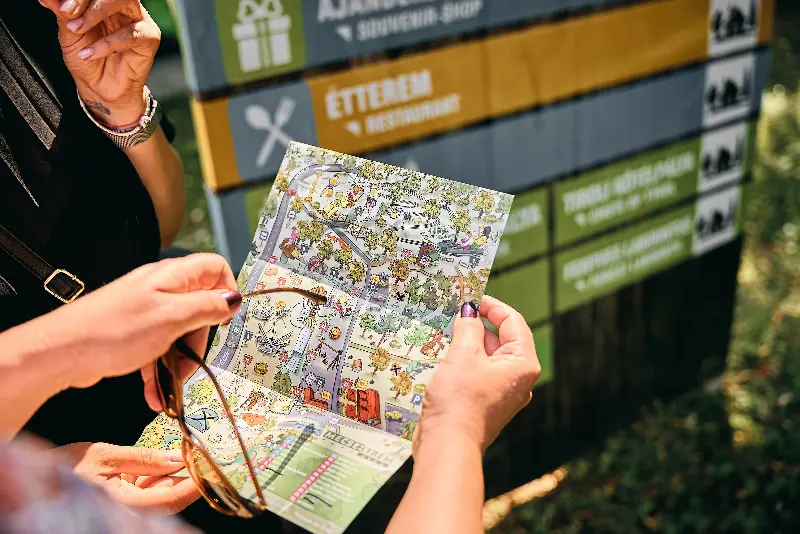
Helyszín címkék:
Three charming villages in the Bakony where healing air awaits visitors
Hype&Hyper
Million-year-old rock towers at the end of the street: Úrkút
Many people may not even realize that at the end of a street in Úrkút in South Bakony is a unique nature reserve of its kind, the so-called Úrkút or Csárda-hegy ancient karst. Declared a protected area in 1951, the area is the result of millions of years of evolution: karstification began when the area was still covered by shallow waves of the sea. Today it has a unique vertical, jagged karst forms, the like of which can only be found in the tropical karst regions of China or Cuba. At first, “just” the magnificent scenery opens up to us, then as you descend into the twenty to twenty-five metre drop, you pass high rock towers, cone and tower karsts, pits, rocks and stone pieces. All the while, the world is almost silent, and at the bottom of the karst, you can enjoy the majestic scenery in practically complete silence and tranquillity. In addition to the rich and varied worlds of shapes, the colour palette of the stones, the flowers and plants hiding here are also worth paying attention to. Last but not least, in summer, the temperature is much more pleasant down there, among the cooling stones of the karst.

Healing air and a magical waterfall: Farkasgyepű
Farkasgyepű, a village of a few hundred people in the Bakony, is surrounded by dense forest and huge trees, crossed by small roads and babbling streams. All this, coupled with the altitude of 402 metres above sea level, results in a sub-alpine climate and particularly good, healing air. That is why in the late 1920’s, a forest school for children was built here, where sick children and children with difficult family background were given the opportunity to recover for a few weeks – the former school has been a medical institution for half a century, nowadays it is called the Veszprém County Pulmonary Institute. However, the area still offers a great opportunity for excursions for everyone, starting from the village, you can make several walks, longer or shorter hikes. One possible route takes you to the Bitva spring and Pisztrángos (Trout) Lake, while the other, longer and perhaps even more beautiful hike takes you past ancient tombs to the valley of the Köves stream and the magical Csurgó well’s waterfall, where you can take a rest. Also worth a visit is the Church of the Visitation of Our Lady, consecrated in 1909 and built from locally quarried limestone, in honour of which a farewell service is held on 2 July each year.

A unique architectural monument and a special Passion Play: Magyarpolány
The Csurgó well is already on the outskirts of Magyarpolány, which is also worth a visit. Petőfi Street, which is reminiscent of the old structure of the settlement, was declared a folk architectural monument in 1968. The houses here were built by German families who settled here in the mid-eighteenth century. The monument is made up of a wide street, large gardens and the typical Bakony vernacular architecture of the houses with porches, balustrades and columns. In 1989, in one of these houses, the Village museum was established, and Attila Diénes, a sculptor of Transylvanian origin, also moved to Petőfi Street. The community of Magyarpolány was awarded the Europa Nostra Prize in 1993 for the preservation and care of its monuments. The Copf style church of St. Ladislaus (built between 1761-63) and the late Baroque Calvary (built around 1780) are also monuments. At each of the latter’s rest stops, you can see a statue illustrated with wooden sculptures. At the top of Calvary Hill is the neo-Gothic Chapel of Our Lady of Sorrows, consecrated in 1910. From here, you can also see the village and the surrounding countryside. In addition to this, the Magyarpolány Passion Play has been held here every year since 1993, and for two decades now, the villagers have been performing it.







